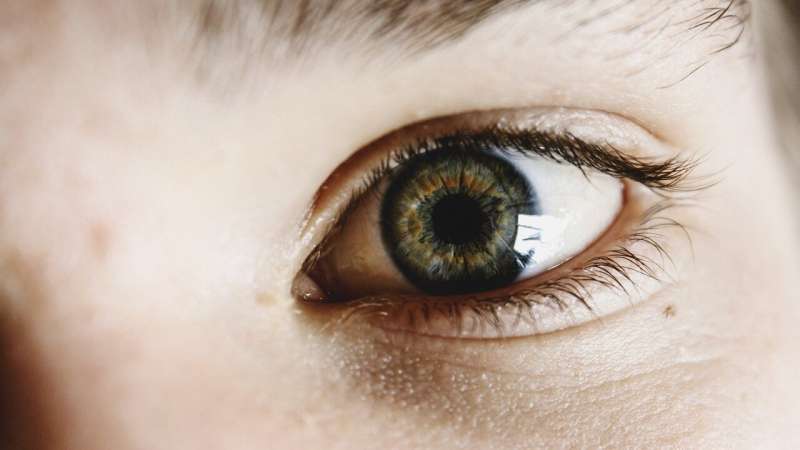This article has been reviewed according to Science X's editorial process and policies. Editors have highlighted the following attributes while ensuring the content's credibility:
fact-checked
peer-reviewed publication
trusted source
proofread
Finding a treatment option for tear duct obstruction that works for children

Congenital tear duct obstruction (a blocked tear duct) is the most common cause of excessive tearing in infants and young children. Fortunately, most children require minimal treatment, but those with persistent symptoms can have a procedure to clear the blockage either in a clinician's office without anesthesia or in a surgical setting with anesthesia.
Few large studies have looked at the results of those treatment approaches. Now, a recent study of more than 19,000 patient records from across the U.S. by Boston Children's Department of Ophthalmology shows that children who received treatment in a surgical setting had a slightly better chance of not needing further care.
While the study couldn't pinpoint reasons why basic office-based treatment led to a slightly higher risk of repeated procedures, the findings might help clinicians have meaningful conversations with families when deciding how to approach treatment, says the study's lead author, ophthalmologist Isdin Oke, MD, MPH.
Some children need more treatment
A narrow tear duct can lead to the condition known as nasolacrimal duct obstruction (NLDO), causing tearing and irritation and making children susceptible to eye infections. Most children's NLDO naturally clears over time as they grow, and parents can massage the area where the eye meets the nose to help clear the obstruction, Oke says. But some children need a physician's care.
The research team, which included Massachusetts Eye and Ear ophthalmologists, wanted to see if the type and location of treatment make any difference in why some children require further care after an initial procedure. They turned to the American Academy of Ophthalmology's Intelligent Research in Sight (IRIS), a nationwide registry of eye disease diagnoses and treatments containing data from more than 70 percent of practicing ophthalmologists. They reviewed the electronic health records of 19,357 children who had NLDO treatment between 2013 and 2020.
One of their key findings, as detailed in a study published in JAMA Ophthalmology, was that one in 14 patients had additional treatment within two years of their first procedure. That's a small portion of patients, but the factors behind their treatment could help future patients avoid repeat procedures, Oke says.
Takeaways for your practice
The highest risk of recurring NLDO was associated with children who had "simple" probing—a thin metal probe placed in an eyelid opening and down into the nose—in a clinician's office.
Despite that risk, the study also found that nine out of 10 patients receiving that in-office treatment didn't have recurring NLDO. Lower risk was associated with patients who instead had the obstruction cleared by dilation of the tear duct or placement of a silicone tube—all under anesthesia by surgeons who perform a high volume of NLDO procedures.
One of the study's authors, David G. Hunter, MD, Ph.D., chief of the ophthalmology department, says that while the findings didn't lean significantly toward one treatment option, providers can still consider what's best for their patients with help from the data. Here's what he and Oke recommend:
- First prescribe an antibiotic, as needed. It won't open every patient's clogged tear duct but it can at least treat any secondary infections that develop.
- If the condition persists, surgical treatment is probably the best option for infants because an in-office procedure won't be comfortable for children that age.
- Ultimately, treatment could depend on what parents want. "A lot of the time," Hunter says of NLDO and other conditions that have several treatment options, "it's a parent who will shift my line of thinking."
More information: Isdin Oke et al, Factors Associated With Nasolacrimal Duct Probing Failure Among Children in the Intelligent Research in Sight Registry, JAMA Ophthalmology (2023). DOI: 10.1001/jamaophthalmol.2023.0004



















